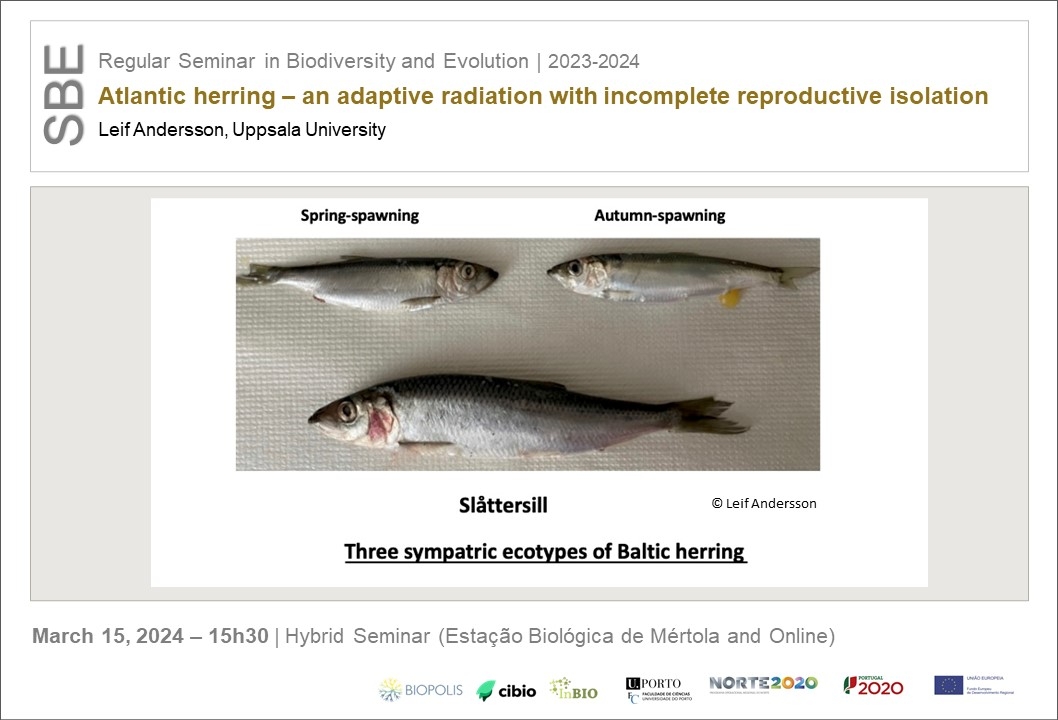Atlantic herring – an adaptive radiation with incomplete reproductive isolation
15 Mar 2024 - Leif Andersson, Uppsala University | 15h30 | Estação Biológica de Mértola and Online

REGULAR SEMINAR IN BIODIVERSITY AND EVOLUTION
Initial genetic studies with a handful of neutral markers revealed no genetic differentiation among populations of Atlantic herring, not even between Atlantic and Baltic herring classified as distinct subspecies by Linnaeus. Whole genome sequencing has totally changed the picture. Atlantic herring can now be divided into many subpopulations (ecotypes). It is an adaptive radiation with incomplete reproductive isolation between ecotypes. We find strong genetic differentiation at loci under selection but minute genetic differentiation at neutral loci. The explanation for this is the huge population sizes minimizing drift, high fecundity allowing effective selection, a homing behavior but with gene flow. Herring is a broadcast spawner and it is probably no strong selection for prezygotic reproductive isolation. Ecological adaptation in Atlantic herring is related to a diversity of environmental conditions including salinity, temperature and light conditions as well as behavioral traits such as timing of reproduction and migration. Recently we used SNP-chip analysis to explore the population structure of Baltic herring in the Bothnian Sea. This analysis revealed two major subgroups: spring- and autumn-spawning Baltic herring. However, a third genetically distinct population was present among the spring-spawners. This ecotype had a three-fold larger body size than other populations spawning in the same area at the same time implying a marked difference in feeding behavior. Our results have important implications for fishery management and for the maintenance of genetic diversity in this species that has a key role in the ecosystem of the Nort-Atlantic Ocean.
Dr. Leif Andersson is a specialist in genetics and genome biology. He and his group have made ground-breaking studies on the relationship between genetic and phenotypic variation. He has been working on comparative genomics using domestic animals as models for phenotypic evolution. This has resulted in discoveries of genotype-phenotype relationships such as mutations affecting pigmentation, gaits in horses, comb morphology in chickens and muscle growth in pigs. He has also studied the genetic basis for domestication in rabbits, chickens and pigs. The research program has been expanded to natural populations as exemplified by studies of the evolution of Darwin’s finches and their beaks, a supergene controlling male mating strategies in the ruff and genetic basis of ecological adaptation in Atlantic herring and other fish species. Leif Andersson is professor in Functional Genomics at Uppsala University and in Animal Genomics at Texas A&M University. He was awarded the Wolf prize in Agriculture 2014.
[Host: Miguel Carneiro, Evolutionary Genetics and Genomics - EVOLGEN]
Zoom Link: https://fc-up-pt.zoom.us/j/84429728251